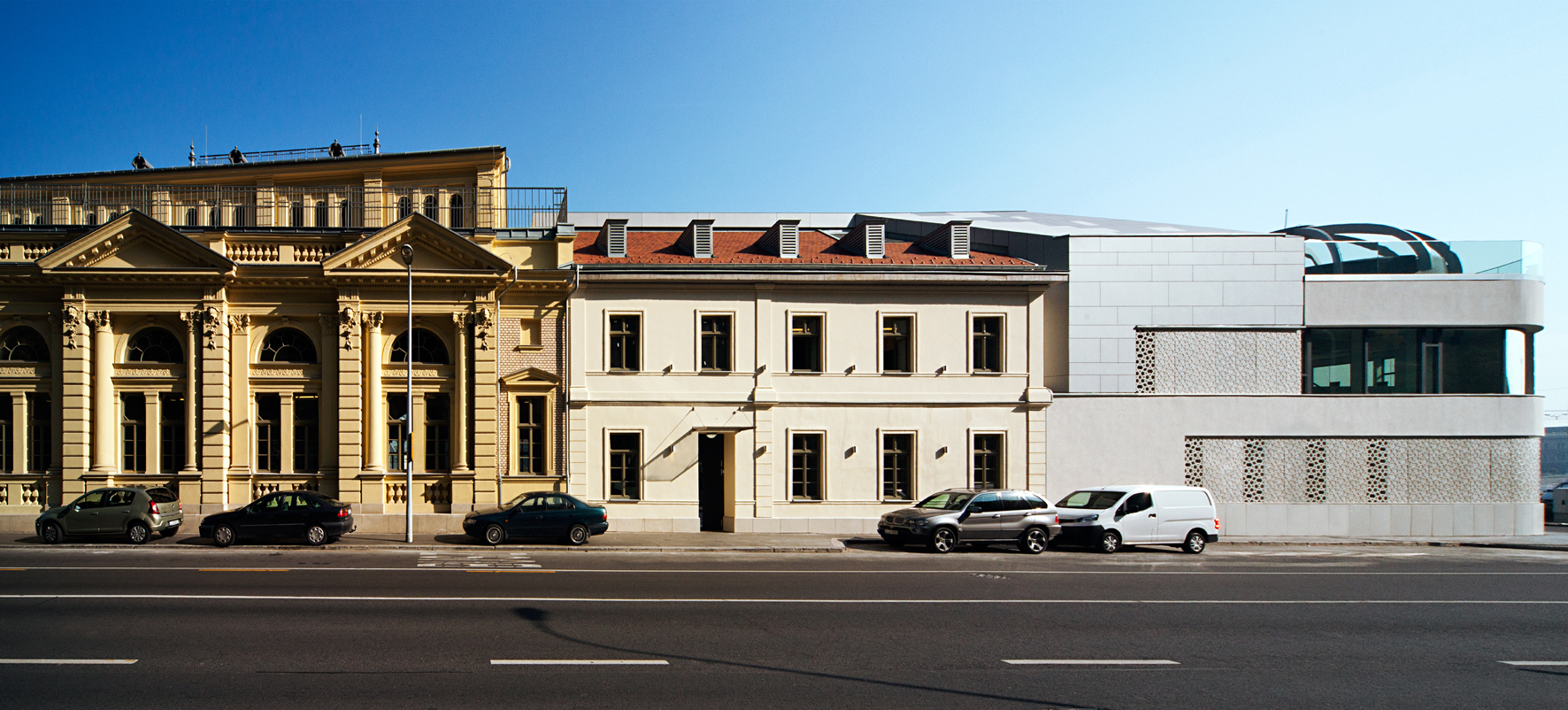Renovation of the Rudas Bath in Budapest
The Rudas Bath in Budapest was built over 400 years ago and is still in use today. In order to remain attractive for its visitors, it had to be renovated. Among other things, the facade benefited from that. It was upgraded with oriental-style concrete elements made out of CRH White Cement.
The most famous sights of Budapest include its world-renowned spas. They awarded the Hungarian capital with the nickname “spa town” – and rightly so, because the bathing has a 2000 year old tradition here. Already the Roman founders took advantage of the resources of nature. The still-functioning bathrooms are mainly from the decades of the Turkish occupation. The Rudas Bath was first mentioned in 1597 and continues to offer its visitors a relaxing respite. To enhance this, the management decided to renovate the spa in end of 2014. The renovation work lasted a year. In addition to that, the bath got four new swimming pools, saunas, a restaurant and a café. A special highlight of the renovation is the new roof terrace. In addition to a pleasantly tempered Jacuzzi, it offers an impressive view of the directly adjacent Danube and the city.
Facade
But not only the visitors of the Rudas Bath benefit from the renovation. The passers-by of the building can experience the improvement first hand, because the facade of the south wing enjoys a sensational design. It consists of snow-white concrete elements that are designed with a girih decor. These timeless, aesthetic ornamentation have already been used by the inhabitants of the Ottoman Empire. It is based on five basic designs that consist of simple polygons. All edges have the same length. Each theme has a simple pattern, whose lines bisect the edges. If the elements are combined with one another, a net-like design with or without periodic repetitions is created. For the reconstruction of the Rudas Bath, this ornamentation was used for 21 grating elements and 40 surface-structured precast elements. They are complemented by 67 plain white panels, that were built primarily in the base area. Ivanka Factory & Design Services from Budapest took over the preparation of these extremely graceful concrete elements
Manufacture of precast elements
This leading Concrete Design brand is known for its advanced design and outstanding technical solutions round off the concrete topic. The company has set itself the goal of using a material that is considered by many as rough and industrial for producing special design elements. The company demonstrates a holistic approach and is different from a normal precast concrete component plant in many ways. For example, it also offers services and products in the field of architecture, design and engineering, as well as in research and development. In the production of white concrete elements, concrete specialists rely on the CRH White Cement for years.
White cement
It is available on the market under the name CRH White and is distinguished by its bright white color. It is also the reason why many concrete producers opt for this cement when it comes to producing high-quality white-faced concrete elements. Besides, this cement doesn´t rank behind it´s grey counterpart, even in technical respect. Also bulky components can be realized well with it. CRH White offers another advantage when the concrete is dyed: Pigmented concrete elements, which were produced with the CRH White Cement, appear much more brilliant than it is possible with its gray counterpart. Considering these advantages it becomes quickly apparent that it has been a good decision to trust the CRH White cement for the Rudas Bath. The person in charge managed to combine two opposing design ideas with the precast elements made of it. On one hand, the facade appears clear, modern and restrained thanks to the choice of materials. On the other hand, it looks playfully oriental because of girih decor. A paradox, through which the building will certainly attract many glances in the future and perhaps attract additional bath visitors.


